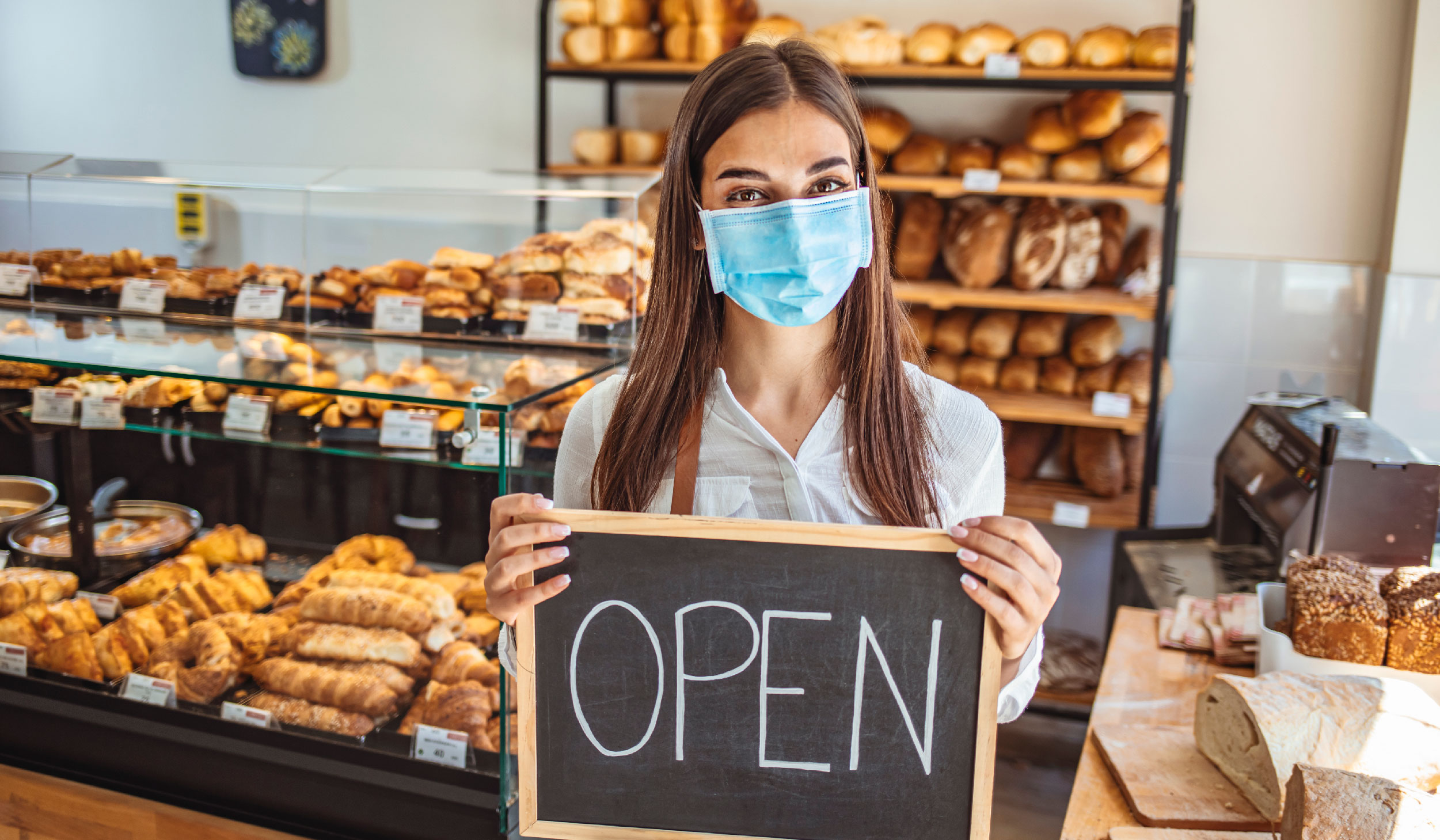
Recover from COVID-19. Be an Agile Business Owner16 min read
In today’s post, we’ll be revealing how the restaurant industry is about to change forever, and how you can anticipate these changes. We’ll also explore the crucial forecasts you should be relying on every day to build your restaurant sales over time.
In all businesses, but especially this one, it pays to be agile. Indeed, agility, the ability to be flexible and adaptive when unexpected things happen, is a trait of the most successful businesses. Knowing what’s coming down the pike is the most important aspect of business flexibility.
As a special bonus, we’ll also divulge several strategies you can use to increase table turnover rate—which translates directly into your money in your pocket.
So don’t get left in the dust. Read this post right now and put the tactics you find within to good use.
In the News
But first, and as usual, let’s look at the ever-evolving COVID-19 situation. Restaurants in California are struggling amid another lockdown order. The measure was taken after new COVID-19 cases spiked dramatically nationwide. The order directs all residents of the state to stay home. Permissible outings include essentials like work, medical appointments/procedures or grocery shopping. This means, of course, that restaurants in the state are again limited to delivery or takeout. Time will tell if other states take similar measures.
In other news, the U.S. government has a limited window in which to pass a second stimulus package. Congress must also approve spending to keep the government afloat—if lawmakers can’t come to an agreement on that, we may see a government shutdown. This, at least, is unlikely as it would leave U.S. citizens even more vulnerable to COVID-19’s economic impact.
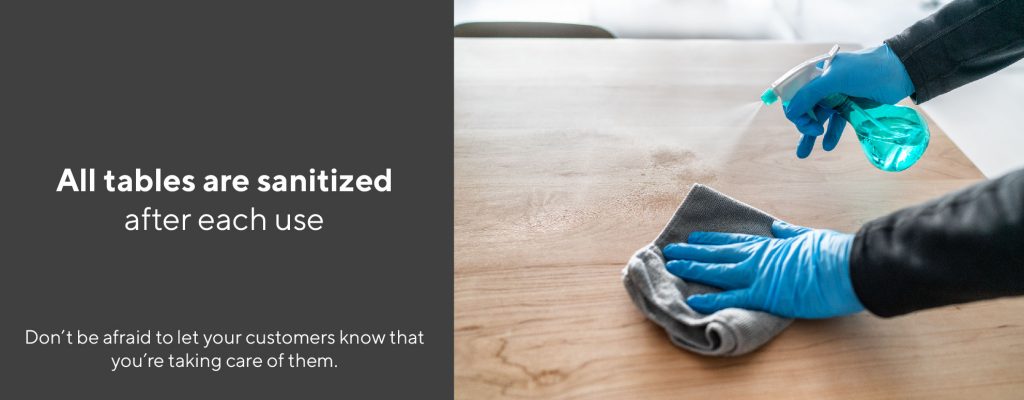
According to experts on both sides of the aisle, a second stimulus is likely before lawmakers go into recess. Unfortunately, according to many reports, a second stimulus check seems unlikely—unless President Elect Joe Biden signs an executive order. Instead, a second stimulus package would focus on unemployment, the Paycheck Protection Program and other means of aid.
Lawmakers have until December 18th to reach an agreement. However, most economists agree that the 2-trillion aid relief package championed by Speaker of the House Nancy Pelosi is unlikely to come to fruition. Instead, it’s thought that the package will be more modest, coming in closer to $1-trillion.
There is some good news, at least on the vaccine front. Two vaccine candidates have shown promising results. Pfizer and Moderna both have candidates that are at least 90% effective. Mass inoculations will be starting soon in some countries, such as the UK. In the U.S., neither of the vaccines have been approved by the FDA yet. But they are being fast tracked.
Hindering the release and distribution of the vaccines somewhat is the fact that they must be stored and dispersed at very low temperatures.
That’s the news for the moment. We’ll keep you updated on further developments. For now, let’s get to the meat of today’s post.
The Power of Forecasting
If you want to be a successful restaurateur, one of the most important things you can do is become familiar with the forecasts available in any modern POS/restaurant management software suite. Many new restaurant owners neglect these powerful tools, believing that they can, or should, do this analysis on their own. But the tools provided by modern POS systems rely on robust algorithms that go far and beyond what one person can do with pen and paper.
This type of forecasting is incredibly powerful. You can use it to make better planning decisions.
If you’ve ever owned a franchise, you’re probably familiar with these tools. McDonald’s Corporation is, for instance, always makes sure their franchisees know how to use their proprietary sales analysis tools. These forecasting tools help store managers manage inventory and anticipate guest counts based on previous sales.
For instance, in a fast food restaurant like McDonald’s, it’s very likely that if last Friday was busy, this Friday will see similar numbers. If last Monday was slow, this Monday will probably be slow too. But if last Monday was unusually busy, there’s probably a reason for that. What’s more, the cause of the spike in business may still be present. It may be wise for the manager to anticipate this possibility by scheduling a few extra crew.
Automated sales forecasting tools make this easy.
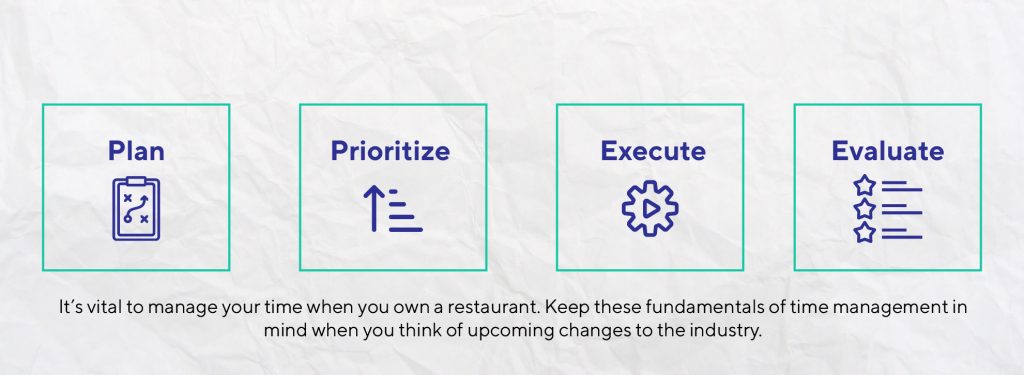
If the prediction turns out to be wrong, no big deal. Curb the labor cost by finding out who wants to go home and sending them home. But if you’re right, you avoid:
-
Annoyed customers
-
Lost profits
-
Confusion and frustration in the kitchen
But this sort of analysis isn’t just important in the fast food sector. Analyzing your sales data will help you immensely no matter what type of eatery you operate.
Forecasting relies on two components:
-
Data
-
Smart analysis of that data
As mentioned, most franchisers will provide proprietary tools to help you with this. But if you’re on your own, you’ll want to invest in a solid, modern POS solution. A solid POS solution will capture:
-
Inventory levels
-
Overall sales
-
Marketing data
Marketing data is an important aspect of forecasting that often gets left out. When you engage in marketing, remember to cross check your historical sales data with your marketing efforts. For instance, don’t just look at the week prior to the start of your marketing campaign.
You should also consider the sales on the same day:
-
Last week
-
Last month
-
Last year
Analyzing historical sales data is the only way to truly gauge whether a marketing campaign was effective. Of course, you’ll never be able to account for all variables. But the fact remains that a robust analysis of historical sales data is probably the best you’re going to get in terms of accuracy. Here’s what you want to see when evaluating a recent marketing campaign:
-
Large, significant boost in sales over the previous period
-
Large number of coupon codes, gift cards and other trackable discounts that were tied directly your new marketing campaign
-
Large number of people signing up for your loyalty program for the first time
Restaurant Forecast Types & Benefits
There are many different types of sales forecast. Let’s review these one by one. Each of these forecasts should be available in your POS package. At the very least, your POS should play nice with your restaurant accounting software. Such software should definitely provide the below forecasts. Each of these forecasts is an essential kit for the modern restauranpreneur.
The Guest Forecast
The guest forecast is a prediction of how many guests you’re likely to have on a given day. An accurate guest forecast helps you serve your guests more efficiently, and it helps you provide higher value. This, of course, leads to higher profit margins over time. Your guest forecast will be extremely useful to your marketing team as these folks can use it to time specials such as loyalty plan recruitment events, special coupons, etc.
The Inventory Projection
Inventory projections are a type of forecast that you can use to:
-
Prevent food shortages
-
Minimize food spoilage and waste
-
Optimize food procurement and pricing
For instance, proper inventory management can help you buy dry goods in bulk, which will usually save you money. An inventory projection keeps tabs of inventory flow on a daily basis. On average, an inventory projection will save you around five percent on food costs. You can then reinvest these recouped funds in marketing.
The Staffing Forecast
An analysis of daily, weekly and monthly labor can help your staff more efficiently. This keeps your average labor low. Keep in mind that a low labor cost translates directly into a higher profit margin. On average, keeping a close eye on your labor will reduce your labor costs by between two and five percent. This may not seem like much. But over time, it adds up. Again, you can reinvest this money in marketing campaigns.
The Sales Forecast
Next we have the all-important sales forecast. Your software will take into account several factors to come up with this prediction. The most important of these factors are:
-
Number of seats in the dining area
-
Check averages
-
Seasonal highs
-
Seasonal lows
If you run a bar, your software should be able to tell the difference between food and liquor sales. Ideally, then, it can give a separate forecast for each. This can come in handy when, for instance, there is a virus going around causing food sales to drop off. If you know that your liquor sales will go up, it becomes even more important to have robust inventory forecasts, doesn’t it? You see, it’s all related.
A good sales forecast will also take into account holidays, school vacations and other events that change consumer behavior. Your system should accept this data from a reputable source and account for it automatically. See your owner’s manual on how to provide your system with such a data source if it doesn’t have one already.
The Table Turnover Rate Forecast
This restaurant forecast is related to the sales forecast. It is a prediction of the number of tables you’ll clear in a given day. You need to predict this so you can get a rough estimate of your daily volume and eventual profit. Your system will generate this forecast based on historical sales data and other factors such as the aforementioned special event days, current events and weather.
Table turnover rate is one of the most important—and most often overlooked—aspects of restaurant profitability. So let’s pause for a moment to consider how to increase it.
Things that contribute to a slow turnover rate:
-
People lingering over their meal
-
Slow or inept wait staff
-
Slow or inept kitchen staff
-
Large tables
Below are a few nifty tactics you can use to increase table turnover rate.
Asking, “What brings you folks in today?” This, or a similarly phrased question, allows you to gauge customer intent. If your guests are in for a special occasion, you can expect them to linger over their meal. But you can make up for these lethargic guests too.
If another guest indicates that they’re on their way to a convention or some other event and are in a time crunch, there’s a technique you can use to speed things along. Simply let your staff know that this order is a priority. Since you know these customers want fast service, you can safely prioritize their dishes. This will, if applied consistently, lead to faster table turnover and more money in your pocket.
Next, use a, “We don’t seat incomplete parties” policy during your busiest shifts. If you use a reservation system, politely insist that all parties must be present in order for the group to be seated. Incomplete parties lead to slow table turnover.
They cause a bottleneck in your operation, limiting the number of orders you can take. If you decide to instigate this policy, give customers a week or two notice to avoid needless negative reviews.
The next tactic is to simply ask table campers to leave. But be very careful in your approach. A general rule of thumb is that if a party has lingered for more than forty-five minutes to an hour, you can politely ask them to leave.
This is especially true if they’re being loud or obnoxious. A good way to give customers the message without actually telling them to leave is to have your wait staff tactfully clear used dishes over multiple visits to the table. This signals to customers that it’s time to go.
If you have a bar or lounge, you can convert table campers into bar customers. Simply ask them to move on over. If they’re whale customers and seem agitated, you could offer a free round of drinks if they’ll move.
Next, if it’s rush hour and your tables are filling fast, you could consider instructing your wait staff to offer items that your kitchen staff can prepare quickly. Look for specific opportunities to make this happen. For instance, if a customer is waffling over a light lunch, such as salad and soup or a heavy one like steak and potato, suggest the salad. The steak dinner may be the higher profit item, but clearing the table faster may be worth more to you.
Finally, train your staff to get more done with one trip. If you serve bread, instruct your wait staff to bring the bread when they introduce themselves. Never have staff coming over to introduce themselves empty handed. This is a waste of a trip, and, worse, idle chitchat often annoys customers.
The Weather Forecast
Whether you live in a temperate or tropical region, you have yearly weather changes that affect your profits. Keeping tabs on how last year’s weather patterns affected your sales can lead to higher profits this year. Even better: with today’s POS systems and related tools, you don’t have to do this analysis on your own. Unexpected weather, such as a heavy snow early in the year, can absolutely throw off all your other forecasts. Sophisticated restaurant forecasting tools can take this into account in real time, adjusting your projected sales, labor and inventory forecasts. Don’t ignore the weather.
Exploring Changes in The Restaurant Industry
Now that you have a firm understanding of the types of forecasts you should use on a regular basis, let’s cover some of the changes that are likely inbound for the restaurant industry itself. As you read about these changes, consider how they might impact the forecasts you learned about above.
The first restaurants opened in France in the 18th century. Since then, folks have enjoyed the convenience of exchanging money for a hot meal. It was a good arrangement, after all. Travelers, tired from their saunter across hard, sometimes dangerous terrain, could unwind beside a fire enjoying a nice stew or broth or fresh baked bread.
For centuries, the restaurant industry stayed much the same, though the technology certainly changed. Then COVID-19 struck, which ushered in a few key changes:
-
COVID-19 greatly accelerated the rate at which delivery and takeout became the norm
-
The pandemic made customers even more aware of the need for, and paranoid over, frequent sanitization of hands, utensils, etc.
-
COVID-19 caused an increase in home food preparation, which could have lasting effects on the industry
-
COVID-19 has made disposable menus, contactless payment systems, increased takeout options and updated sick leave and absentee policies much more important
Going forward, you can expect customers to be more aware of the potential dangers of food-borne pathogens. At the same time, customers are becoming accustomed to delivery and takeout. This may mean that consumers will be less likely to eat out in the future. Indeed, many fast food restaurants are changing their standard designs to allow for a more robust drive through system—such as featuring two lanes instead of one—and a smaller dine in lobby.
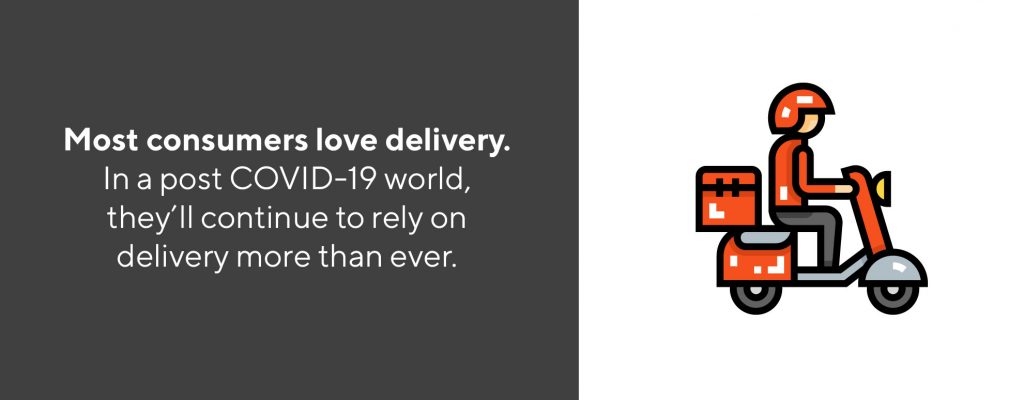
If dine in sales do return to previous levels, it won’t happen overnight. This foot traffic will return in a slow trickle. This has major implications for restaurants that depend on walk ins, like fine dining establishments. Worse, customers may grow accustomed to tables that are spaced further apart. After all, social distancing also affords more privacy. To consumers, this gives a more intimate feel and adds to their satisfaction. But fewer tables does not do nice things to your table turnover rate, does it?
In a similar vein, customers have grown accustomed to individually sized portions and may continue to avoid family-style dinners. This may mean that patrons retain a preference for lower-profit items.
Consumers, more conscious than ever of the dangers of novel viruses, may expect you to keep sanitizer on hand even after the COVID-19 vaccine is made widely available. This, of course, is a cost that will add up over time.
A more health-conscious population might demand more organic choices. But sourcing organic produce is expensive. Will customers be willing to pay higher prices for higher quality ingredients? Probably. If the economy rebounds. But this remains to be seen. According to the Organic Trade Association, demand for these products has increased year over year since 1995. By 2015, total organic food sales had reached $40-billion.
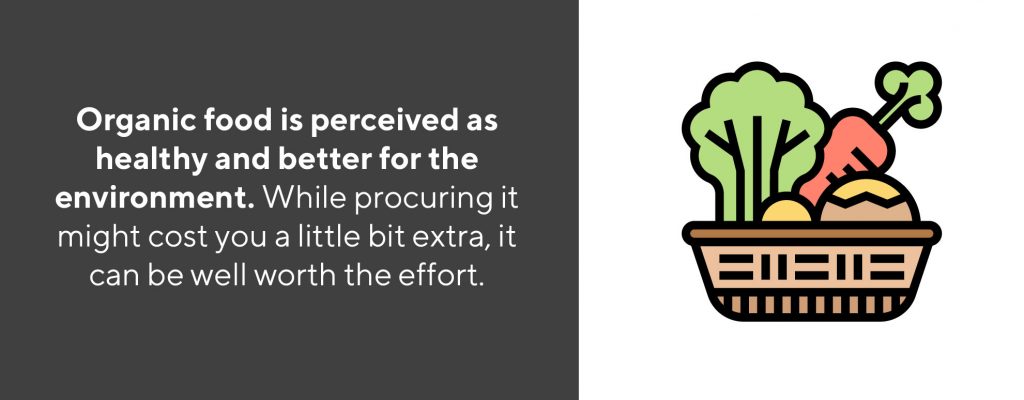
According to Treehugger, people buy organic for the following reasons:
-
A desire to help the environment
-
Better taste
-
Perception that organic foods are healthier
You can expect demand for organic ingredients to continue.
A theme is emerging here: higher costs.
You must counter these costs by managing your labor and turnover rate better than ever before. This, of course, brings us right back to the importance of high-quality forecasts and a powerful POS with which to generate them.
But we’re not done yet.
Social media is incredibly influential in modern society. In a post COVID-19 world, where people are a bit more reluctant to dine in, they’ll be staying at home more. Proximity to computers and modern devices, and a bit more boredom may mean using social media even more. This means that we can expect the effect that social media has had on our industry to increase in coming years.
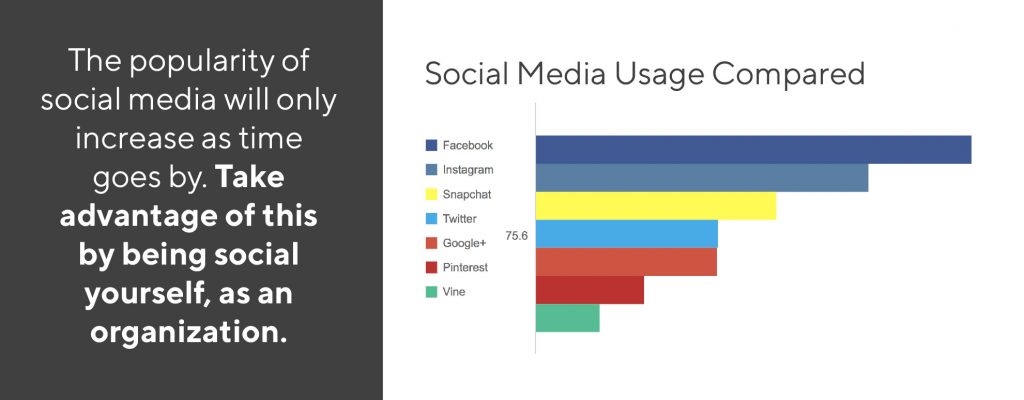
According to Pew Research, 69 percent of Americans used Facebook in 2018. 34 percent used Instagram and 25 percent used Twitter. That’s a lot of people.
One thing that people do a lot of on social media is talk about the businesses they frequent. And in a world where more people than ever before are using social media, it’s more important than ever to keep customer satisfaction high. But focusing on wowing customers when you’re just trying to keep your head above water can be a tough proposition. This will be the topic of a future post, so stay tuned.
For now, know that you should have a robust social media presence of your own so you can reach out to customers. Watch for your social mentions and respond with kindness, humility and grace, if you respond at all. It’s very easy to react rashly when you receive harsh criticism over social media. This is a mistake, and it will cost you. See the Streisand Effect for more on this.
We hope this post has given you insights into what to expect in a post-COVID-19 world. Restaurant owners everywhere are wondering the same things you are. So get a leg up by putting the tips in this post into practice today.
Stay tuned for our next post where we’ll be exploring even more likely industry changes.



